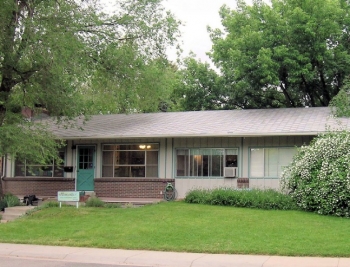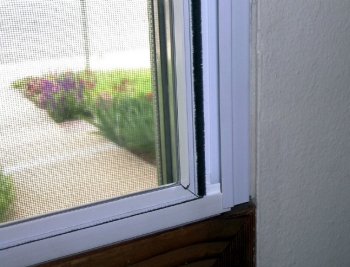
An energy upgrade on this daycare center included interior storm windows because most of the windows are on the north elevation. | Photo courtesy of Larry Kinney, Synergistic Building Technologies.

Interior storm windows improved the energy efficiency of a daycare center with windows on the north elevation. | Photo courtesy of Larry Kinney, Synergistic Building Technologies.
If you have old windows in your home, replacing them with new, energy-efficient windows will most likely return your investment in improved property value and ease of use. However, unless the existing windows are missing glass or otherwise severely leaking, seeing significant annual savings in your space conditioning cost and energy use is unlikely. If you're on a tight budget, a less expensive option is to use storm windows, which will produce similar savings at a far lower initial cost. Some types of storm windows are also a good option for those living in apartments.
Even though storm windows add little to the insulating performance of single-glazed windows (that are in good condition), field studies have found that they can help reduce air movement into and out of existing windows. Therefore, they help reduce heating and cooling costs.
Types of Storm Windows
Storm windows are available for most types of windows. They can be installed on the interior or exterior of the primary window. They range from inexpensive plastic sheets or films designed for one heating season to triple-track glass units with low-emissivity coatings that offer many years of use. Mid-priced storm windows may use glass, plastic panels, or special plastic sheets that have specific optical qualities. Those made of polycarbonate plastic or laminated glass also offer a high degree of resistance to breaking during storms and/or from intruders.
For the most part, interior storm windows offer greater convenience than exterior storm windows. They're easier to install and remove; they require less maintenance because they're not exposed to the elements; and, because they seal tightly to the primary window, they're more effective at reducing air infiltration. Interior storm windows also are often the best choice for apartments and houses with more than one floor. If you can afford exterior storm windows, you can probably afford some newer, more energy-efficient windows, which will be a better investment.
Glass pane types offer better visibility and longer life than plastic pane types, but glass is heavy and fragile. In general, plastics are most economical for people with small budgets or who live in apartments. However, while inexpensive and relatively easy to install, they are easy to damage. Plastic panels, such as Plexiglas and acrylics are tougher and lighter than glass, but may scratch easily. Some may turn yellow over time as well. Some plastic films may significantly reduce visibility and degrade over time when exposed to sunlight.
Wood, aluminum, and vinyl are the most common storm window frame materials. There are advantages and disadvantages to all types of frame materials. Although very strong, light, and almost maintenance free, aluminum frames conduct heat very rapidly. Because of this, aluminum makes a very poor insulating material.
Wood frames insulate well, but they weather with age. They also expand and contract in response to weather conditions. Wood-frame storm windows installed during the winter may not close easily during the summer, and those installed during the summer may fit loosely in the winter. They can also be quite heavy and thicker than metal frames. This can make storage difficult, reduce the view out the window, and reduce the amount of natural light in the room. Wood frames also require the most maintenance. There are, however, aluminum- or vinyl-clad wood frames that reduce maintenance requirements.
Vinyl frames are usually made of polyvinyl chloride (PVC) with ultraviolet light (UV) stabilizers to keep sunlight from breaking down the material. They may expand and warp at high temperatures, and crack in extremely low temperatures, however. Also, if sunlight hits the material for many hours a day, colors other than white will tend to fade over time.
Installation
No matter what type you choose, the storm window frame must be hung square with the primary window and sealed to the opening. You should also consider the fact that they should be easy to move to allow for cleaning and ventilation.
Exterior-mounted storm windows must have "weep holes" at the bottom of the frame to allow any moisture that collects between the primary window and the storm window to drain out. Even though these drainage holes subtract from energy savings, not having them will eventually cause the primary window frame to rot, and could make them impossible to operate.




